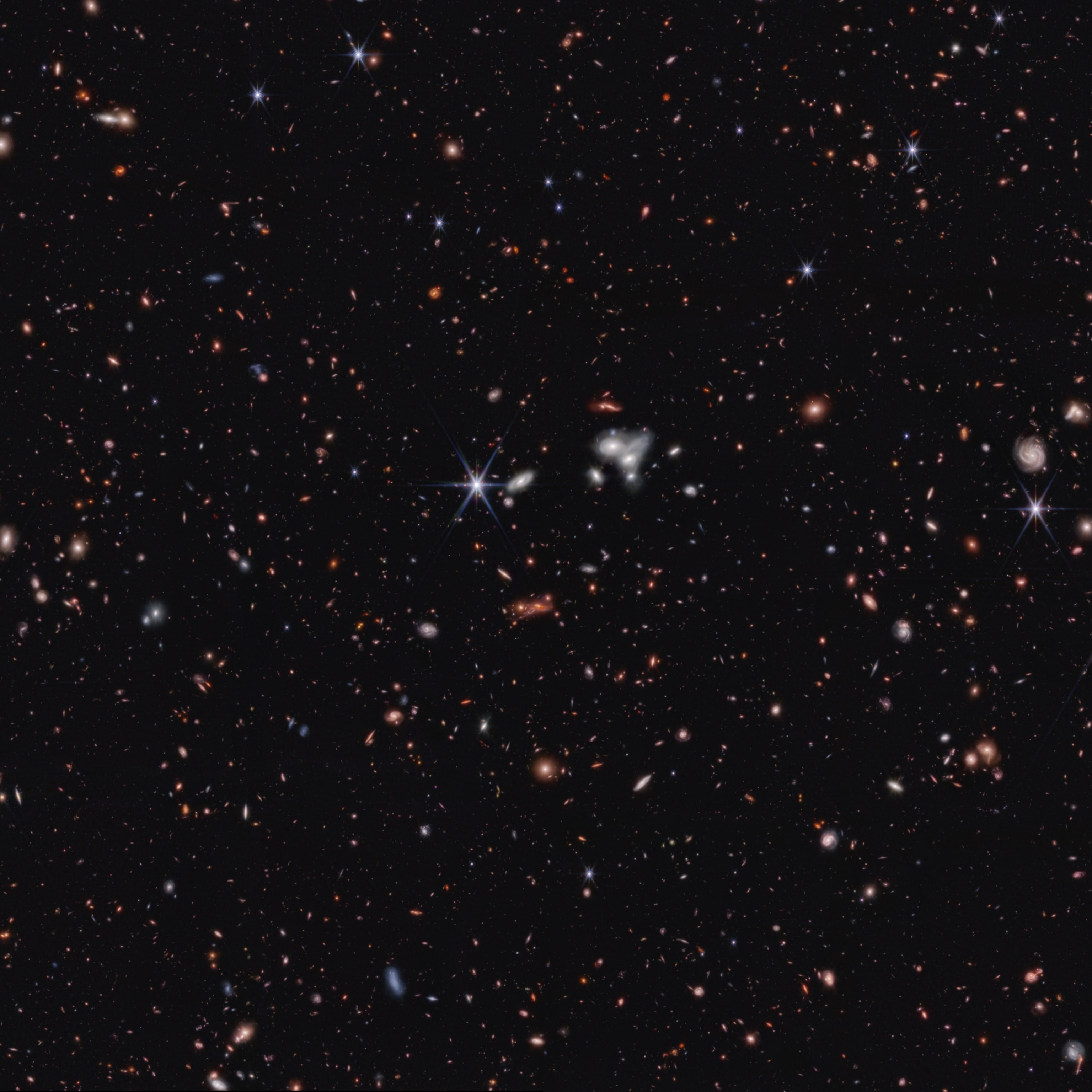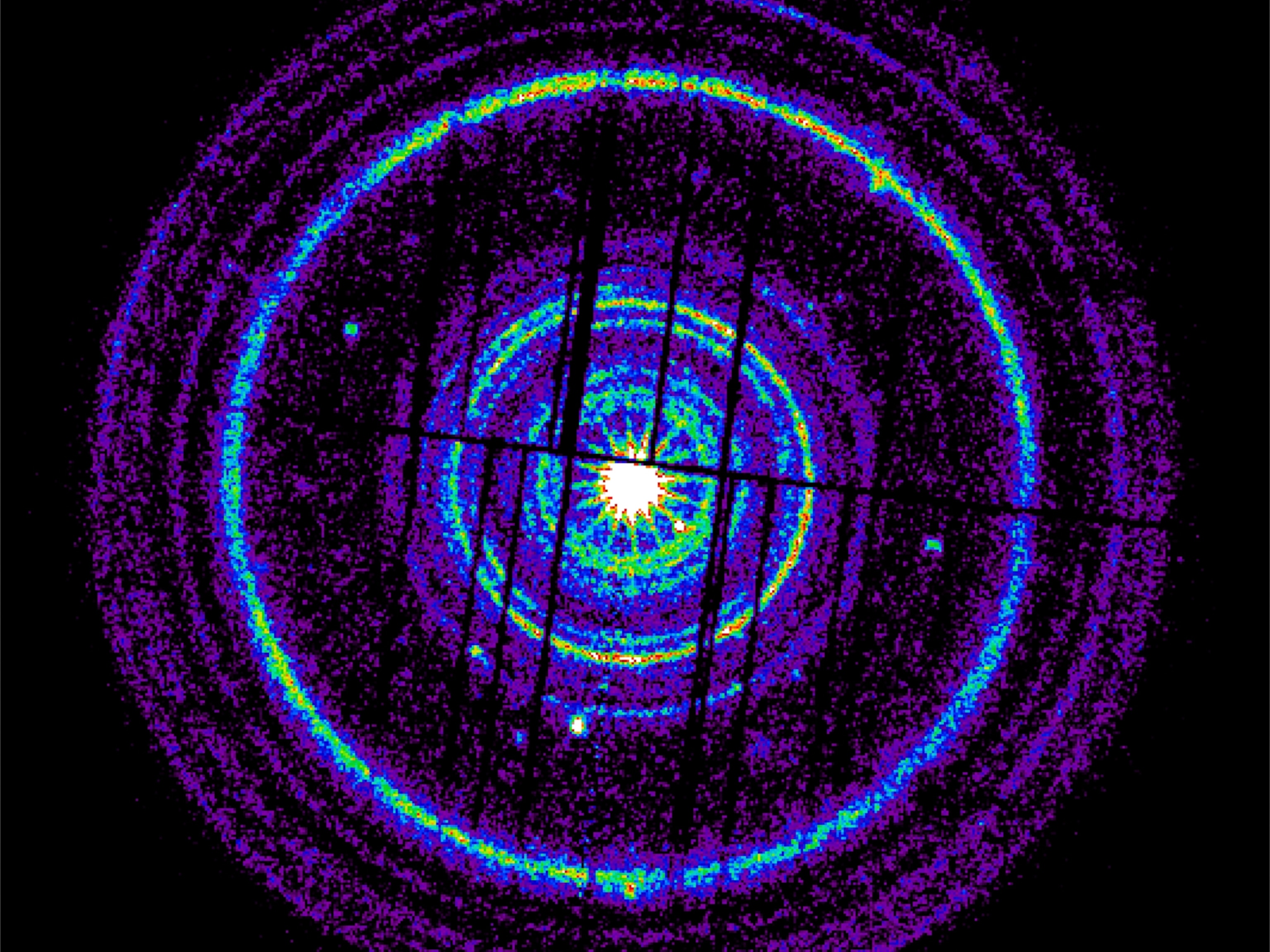
Astronomers spot the biggest, strangest black hole collision ever found
The cosmic pile-up produced the first black hole of its kind ever detected—and that’s not the weird part.
More than seven billion years ago, two immense black holes circled each other until they collided and merged, a cataclysm so intense that it sent ripples soaring through the fabric of space-time. In the early morning hours of May 21, 2019, Earth trembled from the vibrations sent off by this distant carnage, cluing in astronomers to the biggest cosmic bang they’d ever detected—and one that defies theoretical expectation.
The signal picked up by two observatories—LIGO in the United States and Virgo in Italy— came in the form of gravitational waves: disruptions in space-time that massive cosmic events can set into motion. This signal—named GW190521—came from a truly monstrous collision. Researchers estimate that two black holes 66 and 85 times more massive than our sun spiraled into each other, uniting to form a black hole 142 times more massive than our sun.
The event, announced today in Physical Review Letters, is by far the biggest ever detected via gravitational waves. In a fraction of a second, the merging black holes released roughly eight times more energy than that contained within our sun’s atoms, all in the form of gravitational waves. That amount of energy is like setting off more than a million billion atomic bombs every second for 13.8 billion years, the age of the observable universe.
Caltech astronomer Matthew Graham, who isn’t part of the LIGO or Virgo teams, calls the event “probably the largest explosion we’ve ever known in the universe.”
The black hole merger is causing a lot of scientific excitement, for a few reasons. First, the black hole it produced fills in a perplexing gap in our observations. Until now, researchers had found black holes tens of times more massive than our sun and supermassive black holes millions to billions times more massive than our sun, but never had confirmed one between 100 and 100,000 solar masses. Clocking in at about 142 solar masses, GW190521’s final black hole is the first ever found in this intermediate range.
“Now we can settle the case and say that intermediate-mass black holes exist,” says LIGO team member Christopher Berry, a physicist at Northwestern University.
But for Berry and others, the more exciting black hole isn’t the resulting one. Instead, the real surprise is the more massive of the two starting black holes, the one with a mass roughly 85 times greater than our sun’s—because black holes theoretically shouldn’t exist in that range.
“This is shocking, because it’s where we expect black holes not to exist,” he says.
An unexpected black hole
The 85-solar-mass black hole is such a mystery because of how scientists think massive stars die.
For all their nuclear fury, stars are objects in balance: Gravity compresses stars inward, but as light leaves the core, it pushes the star back outward. But massive stars can sometimes burn so hot at their cores, this balancing act can get knocked out of whack. Individual particles of light called photons will pick up enough energy to turn into pairs of electrons and positrons, the antimatter equivalents of electrons. This change temporarily lowers the pressure within the sun’s core, which then causes the star to compress and heat up.
Current theory predicts that when such a star is roughly 60 to 130 times more massive than our sun, the compression and heating leads to a runaway explosion called a pair-instability supernova. Such an occurrence destroys the star so completely that the ejected debris can’t collapse into a black hole.
Weirdly, the larger black hole in the pair that created GW190521 is “smack-bang in the range you’d expect pair instability,” Berry says. In essence, it isn’t supposed to be possible for one star to create such a black hole.
“If you found a black hole that was between 52 and 133 solar masses, it could not have been synthesized as a single, one-shot corpse of a star,” explains Yale University theoretical astrophysicist Priyamvada Natarajan, an expert on black holes who wasn’t involved with the study. “Nature is telling us that there are many ways to reach these black hole masses.”
Hostile mergers?
In a companion paper published in The Astrophysical Journal Letters, the LIGO-Virgo team runs through several scenarios for how the merger—and the odd black holes involved—could have formed. The most promising idea is that at least one of the black holes, if not both of them, formed from the merger of two smaller, more garden-variety black holes.
“That’s my favorite scenario,” says Pennsylvania State University astrophysicist Steinn Sigurdsson, who wasn’t involved with the discovery.
Certain kinds of cosmic environments could make these two-step mergers likelier. One possibility that might increase the chance of such an event is if it happened within a disk of gas orbiting a galaxy’s central supermassive black hole.
There’s tantalizing evidence that GW190521 may have taken place in such a setting. In June, Graham co-authored a study in Physical Review Letters describing a flash of light in the same patch of sky as GW190521, about 34 days after the gravitational waves rattled Earth. Graham’s team argued that the flare could have formed as the merged black hole raced through the disk of gas surrounding a supermassive black hole, heating the gas up enough to make it glow.
That said, there’s one nagging difference between the new studies and the flare results: distance. Graham’s study pinpoints the flare to a galaxy some eight billion light-years away, while the LIGO-Virgo results put the black hole merger at more than 17 billion light-years away. Graham says it’s possible that it’s just a coincidence that the locations match. “If you look at enough things, you will find these very rare things lining up,” he says.
Natarajan has another idea. In a 2014 Science study she co-authored, she calculated that in the early universe, small black holes could bulk up with extraordinary speed by randomly bouncing around gas-rich star clusters and feasting along the way. In a forthcoming study that riffs on this idea, she finds that the right kind of star cluster could give birth to a pair of black holes, each about 50 to 75 times the mass of our sun, that could then merge.
“That’s why I’m super excited!” she says.
For all the theoretical work that GW190521 is sure to spark, scientists say that its mysteries will be solved only after LIGO and Virgo detect more collisions like it. “With a single event, you can always appeal to uniquely lucky circumstances,” Sigurdsson says. “As soon as you have a handful of events, you really start squeezing the heck out of a lot of models.”
Related Topics
You May Also Like
Go Further
Animals
- Behind the scenes at America’s biggest birding festivalBehind the scenes at America’s biggest birding festival
- How scientists are piecing together a sperm whale ‘alphabet’How scientists are piecing together a sperm whale ‘alphabet’
- Orangutan seen using plants to heal wound for first timeOrangutan seen using plants to heal wound for first time
- What La Palma's 'lava tubes' tell us about life on other planetsWhat La Palma's 'lava tubes' tell us about life on other planets
Environment
- The northernmost flower living at the top of the worldThe northernmost flower living at the top of the world
- This beautiful floating flower is wreaking havoc on NigeriaThis beautiful floating flower is wreaking havoc on Nigeria
- What the Aral Sea might teach us about life after disasterWhat the Aral Sea might teach us about life after disaster
- What La Palma's 'lava tubes' tell us about life on other planetsWhat La Palma's 'lava tubes' tell us about life on other planets
- How fungi form ‘fairy rings’ and inspire superstitionsHow fungi form ‘fairy rings’ and inspire superstitions
History & Culture
- This thriving society vanished into thin air. What happened?This thriving society vanished into thin air. What happened?
- These were the real rules of courtship in the ‘Bridgerton’ eraThese were the real rules of courtship in the ‘Bridgerton’ era
Science
- Is the 5-second rule true? Science finally has an answer.
- Science
- Gory Details
Is the 5-second rule true? Science finally has an answer. - E-bikes are good for the environment—but what about your health?E-bikes are good for the environment—but what about your health?
- Why trigger points cause so much pain—and how you can relieve itWhy trigger points cause so much pain—and how you can relieve it
Travel
- The best LGBTQ-friendly destinations for every travelerThe best LGBTQ-friendly destinations for every traveler
- 6 of the best active pursuits on Cape Cod and the Islands
- Paid Content
6 of the best active pursuits on Cape Cod and the Islands - The key to better mindfulness may be your public gardenThe key to better mindfulness may be your public garden







